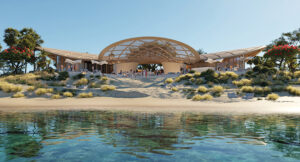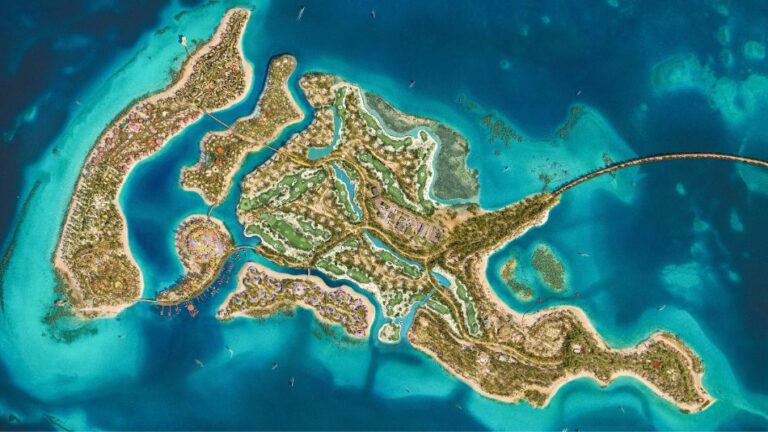The island project, by developer Red Sea Global, includes 11 hotel and resorts, a marina, luxury villas and sustainable green spaces. The island is connected to the Saudi mainland by a 3.5-kilometer causeway and is about half an hour from the newly opened Red Sea International Airport.
Around half of the course has already been grassed with Platinum TE paspalum, supplied from the Atlas Turf Arabia turf farm that was set up as a joint venture between Golf Saudi and Atlas Turf International.
 The remainder will be grassed by December and the golf course is growing in well under the watchful eye of the agronomy team being developed by Golf Saudi, the course Operator. A Toro irrigation system is also part of the project.
The remainder will be grassed by December and the golf course is growing in well under the watchful eye of the agronomy team being developed by Golf Saudi, the course Operator. A Toro irrigation system is also part of the project.
“Platinum TE paspalum was selected for Shura Links with sustainability top of mind,” said John Holmes, co-founder of Atlas Turf Arabia. “Shura Links is an environmentally sensitive site and because Platinum TE thrives in hot, arid environments and uses less inputs, it matches the overall sustainability goals of the Red Sea development.”
Landscape work is underway, including the addition of ground cover along with palms and large flowering trees to create a garden-like dunescape environment.
“Although it is obviously a desert course that is water conscious with limited turf, we are focusing on creating a great ‘find your ball’ experience where shots that miss turf – almost entirely at fairway cut – will be playable and recoverable off a hard packed, sandy expanse,” said architect Brian Curley.
“I like to refer to the course as having a clean and natural look. Given that we weave in and out of development areas, I felt it was important to create a natural look that focuses on the open sand of the dunesland, but to feature less of a native grass and scrub look and lean on a more refined introduction of ground cover that brings a lusher look.”
 Some holes will have adjacent villas, which will be integrated into the dune environment to limit their visual impact.
Some holes will have adjacent villas, which will be integrated into the dune environment to limit their visual impact.
“The ground cover will grow and sprawl, helping to bring a varied presentation of deep colours and textures,” said Curley. “The result will be a backbone of dunescape that feels a bit more lush and less dry than some arid courses, all while still being very water savvy. There will be very little formal bunkering as most turf areas will transition to sand seamlessly, but there will be bunkering that incorporates irregular lines and sand cart paths to carry the natural theme.
“Most golfers immediately equate Saudi with ‘hot’ but the Red Sea is a year round destination with average temperatures of 32C (90F). The island environment, unlike inland courses, also offers breezes that will both play into the demands of the course and offer a break from the higher temperatures during the off season.
Fairways are wide, expansive and feature subtle movement. Many are set at angles to encourage multiple lines of play, particularly during windy conditions. Most greens are quite large and include features like punchbowls, feeder slopes, backstops and falloffs, as Curley has aimed to incorporate the ground game and running shots throughout the layout.
“The standout holes will likely be those that play alongside, or out to, the large expanses of waterfront and mangroves, which offer spectacular vistas,” said Curley. “A couple of par 3s – six and 15 – play straight to the sea. And there is a great stretch of holes from four to seven that are in a world of their own with massive open sea views.
“The 16th is driveable par 4 with plenty to think about and eighteen plays directly to the Foster + Partners clubhouse, which will undoubtably go down as one of the most iconic golf facilities in the world.”
Next to the clubhouse is a short-game area and the two-acre ‘Camelbacks’ putting course that plays in and around a dunescape overlooking water.
The Red Sea destination welcomed its first guests last year, with three of its hotels now open. Shebara and Desert Rock will welcome its first guests later this year, while Shura Island is on track to welcome guests in 2025.
The Red Sea International (RSI) Airport, which is situated within three hours’ flying time of 250 million people, has been receiving a regular schedule of domestic flights since September 2023. International flights began in April 2024, with a twice-weekly route between RSI and Dubai International Airport.


